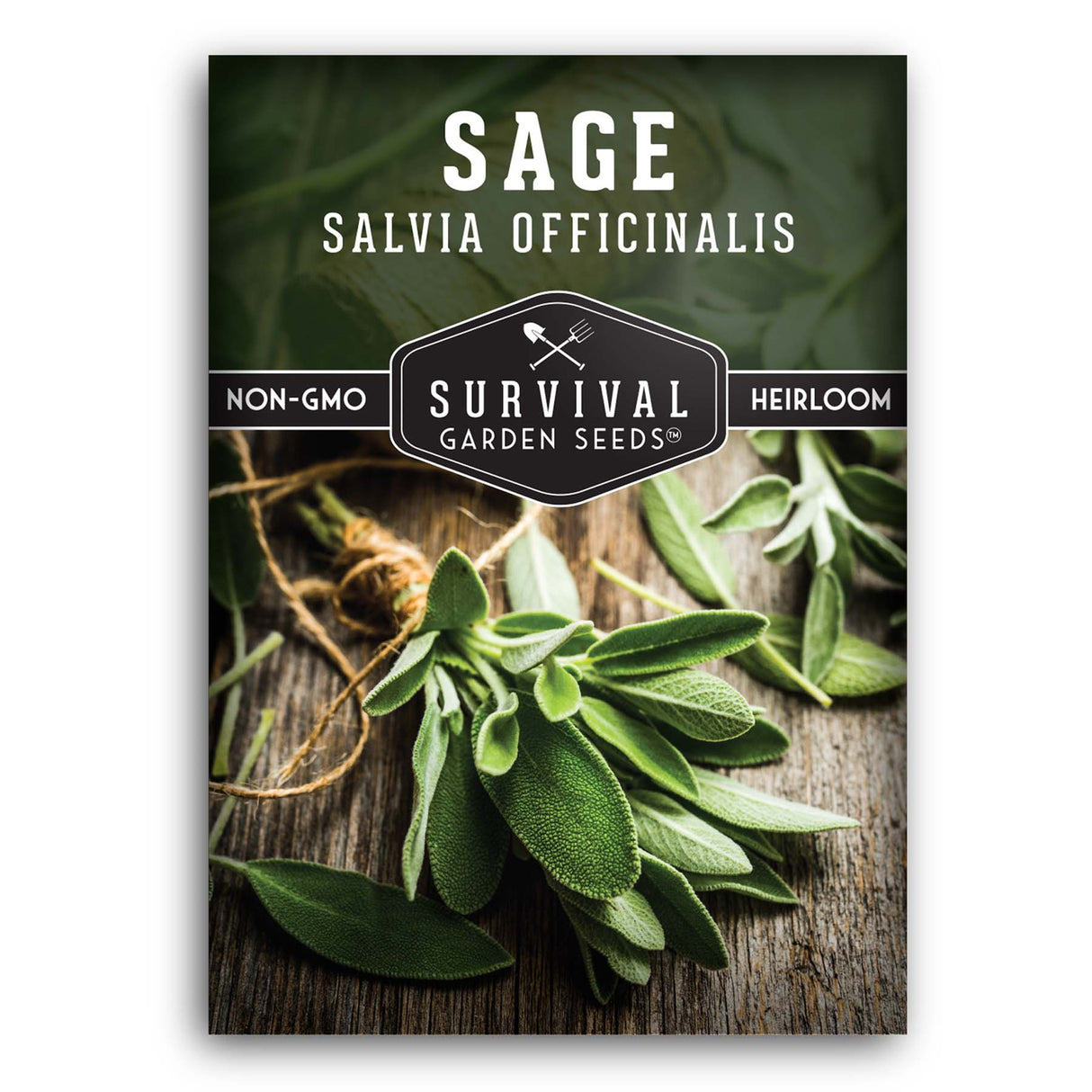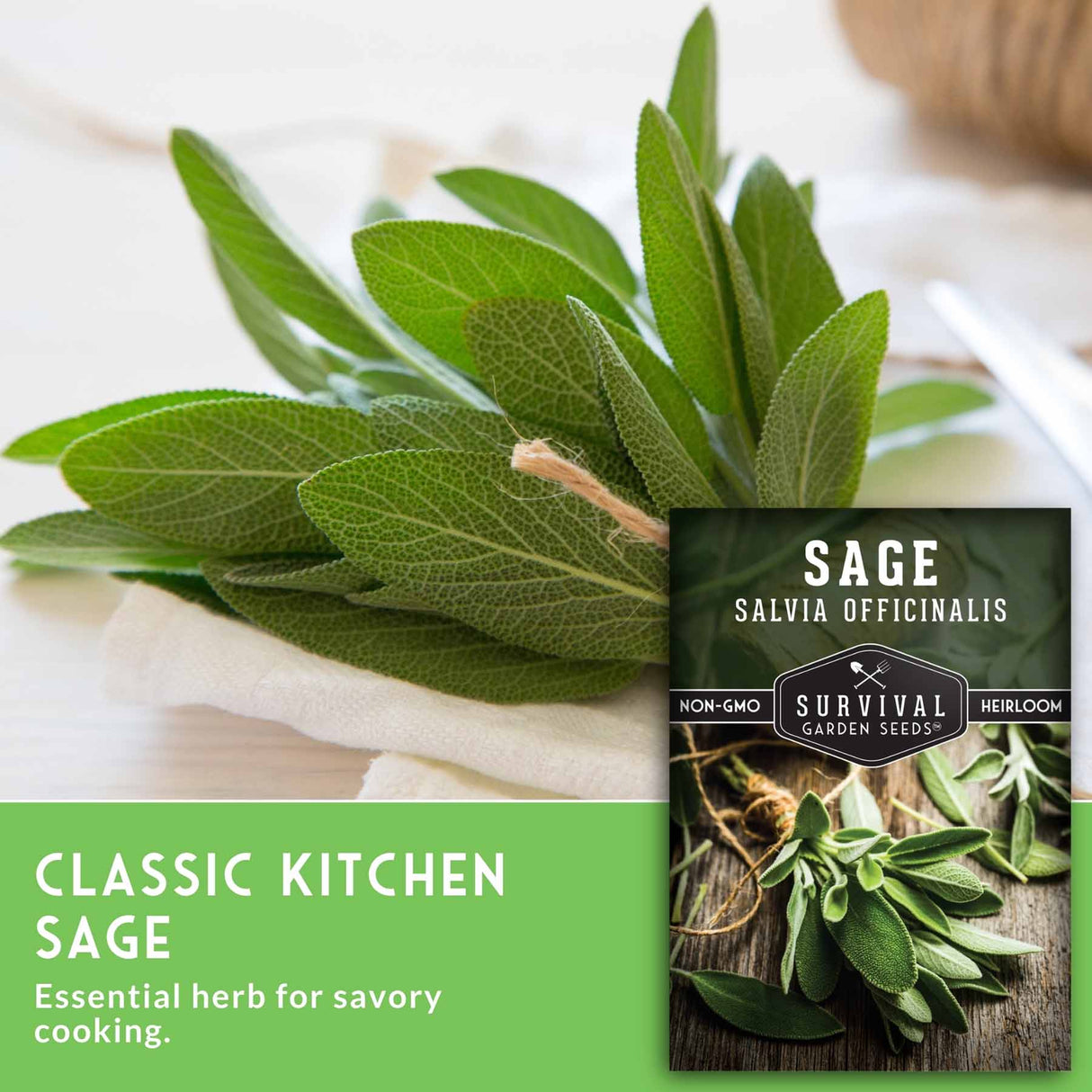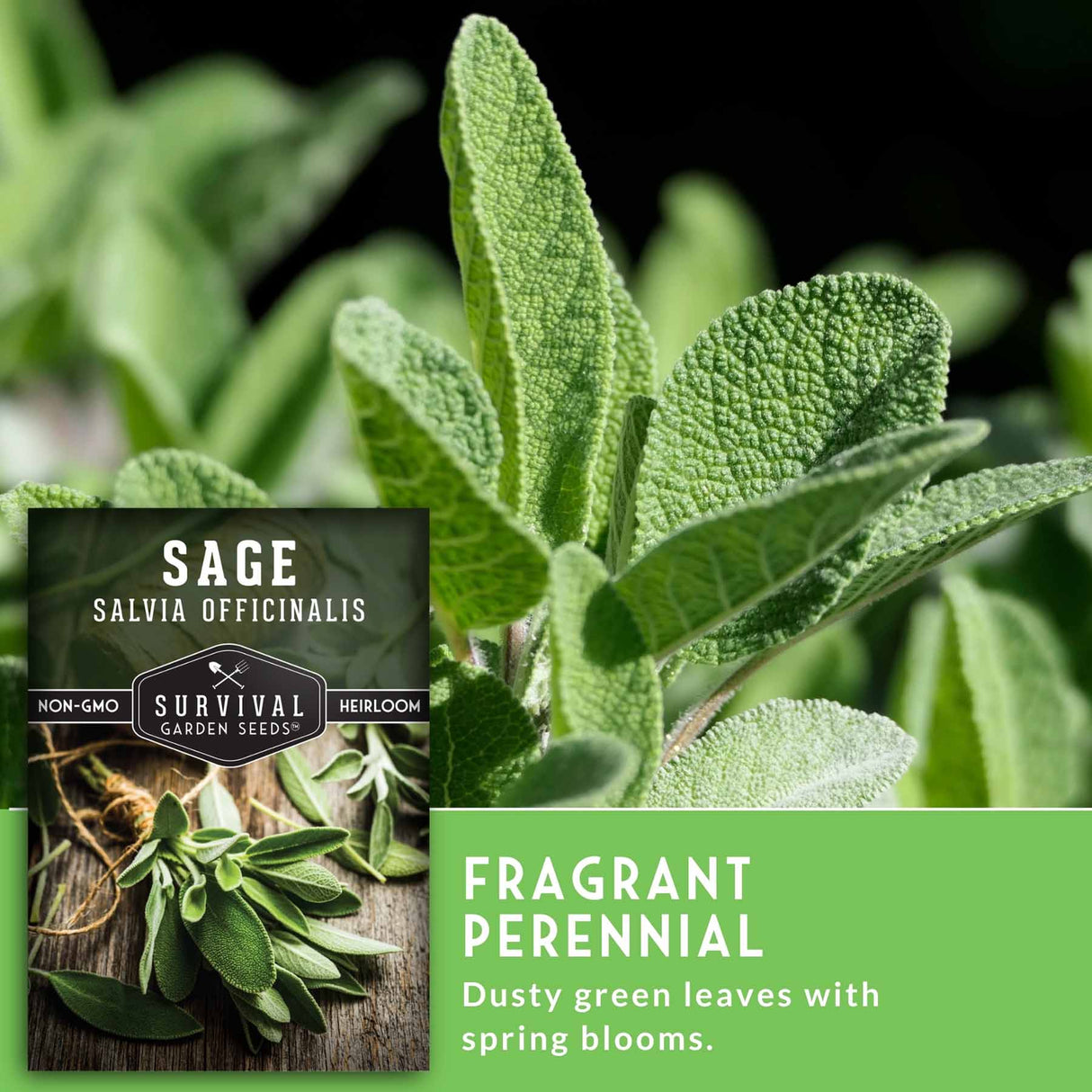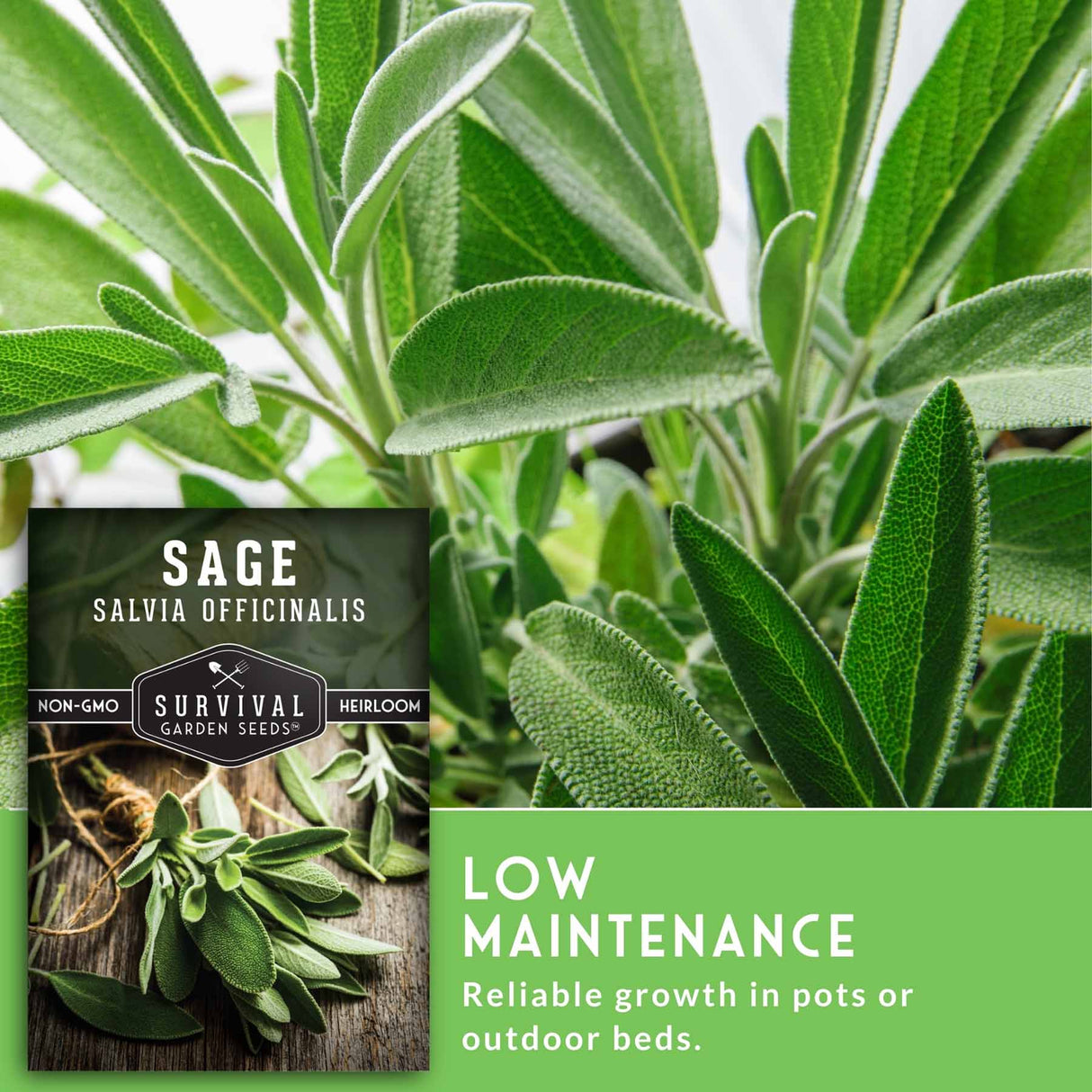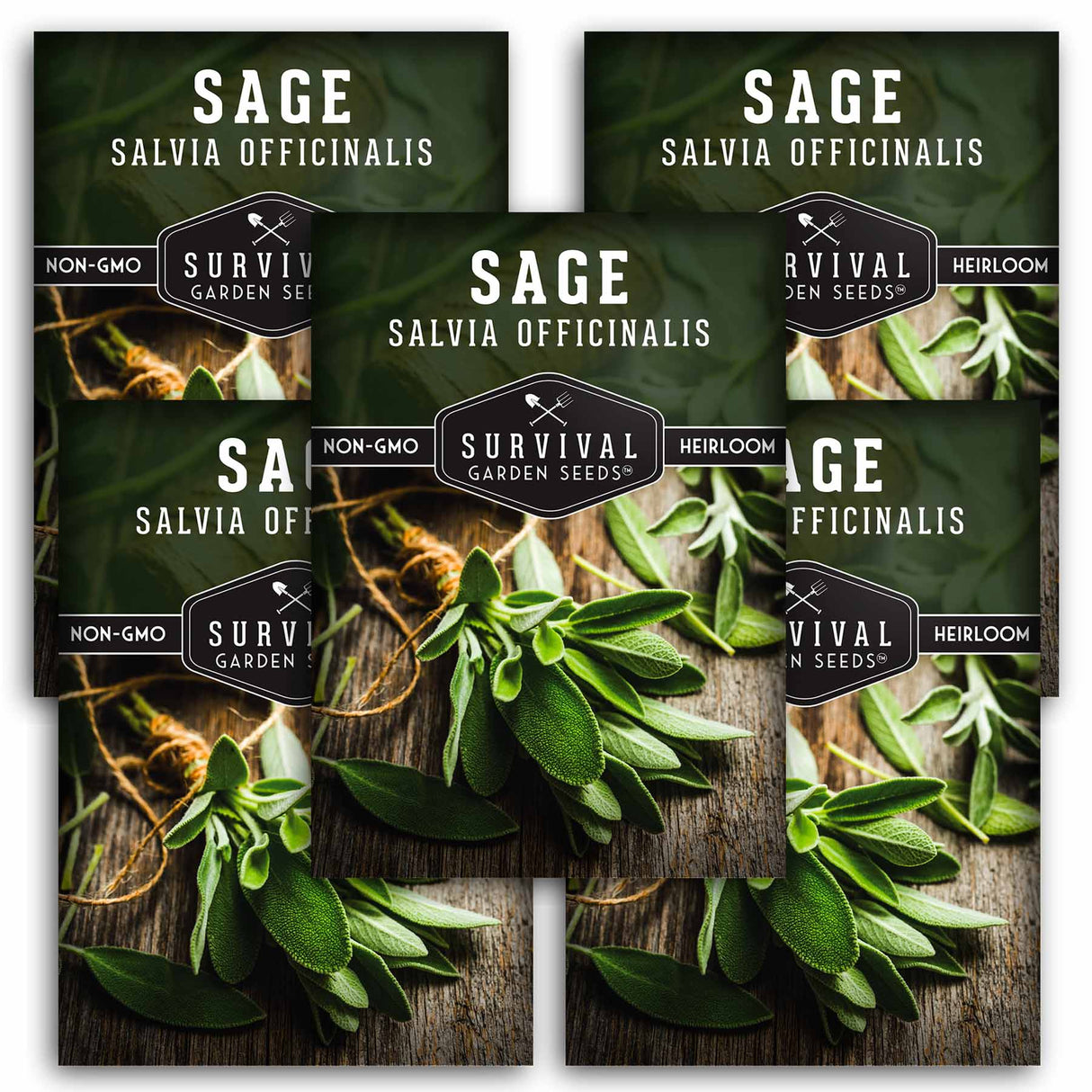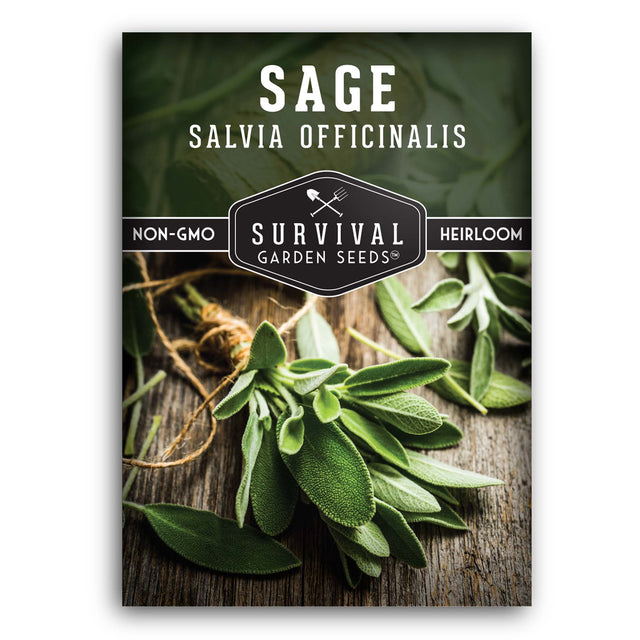Culinary Sage Seeds – Fragrant Perennial Herb for Cooking, Teas & Pollinator Gardens
Heirloom - Non-GMO - Reliable Germination
Culinary Sage Seeds – Fragrant Perennial Herb for Cooking, Teas & Pollinator Gardens - 1 Packet is backordered and will ship as soon as it is back in stock.
Couldn't load pickup availability
Grow fresh, aromatic culinary sage at home with Survival Garden Seeds. This classic herb is essential in any kitchen garden, valued for its dusty green leaves and distinctive savory flavor. Known for pairing beautifully with meats, vegetables, breads, and stuffing blends, sage offers a warm, earthy taste that becomes even more vibrant when harvested straight from the garden.
Culinary sage is a hardy perennial that produces pink, purple, or white flowers in early spring, adding soft color to garden beds while attracting bees, butterflies, and other pollinators. Its compact, drought-tolerant growth habit makes it a reliable choice for both container gardens and traditional herb beds.
Fragrant, Flavorful, and Easy to Grow:
- Fresh sage elevates poultry dishes, sausages, roasted vegetables, and baked goods
- Naturally aromatic foliage ideal for cooking, teas, and home seasoning blends
- Produces soft, dusty green leaves with classic savory flavor
- Hardy perennial with colorful spring blooms
- Attracts beneficial pollinators and supports a healthy garden ecosystem
Why Customers Love Culinary Sage:
- Essential herb for everyday and seasonal cooking
- Reliable perennial that thrives with minimal maintenance
- Strong fragrance and flavor when grown fresh at home
- Attractive addition to herb gardens, cottage gardens, and containers
How to Grow:
- Start seeds indoors 6–8 weeks before the last frost or sow directly outdoors after frost danger has passed
- Plant in full sun with well-drained soil
- Keep soil lightly moist during germination, then water sparingly once plants are established
- Allow plants adequate spacing for airflow and healthy growth
- Harvest leaves regularly by trimming stems, encouraging bushier growth throughout the season
Harvest & Use:
Pick fresh leaves as needed for cooking or dry them for long-term storage. Sage pairs beautifully with savory dishes, herbal teas, stuffing blends, and homemade seasoning mixes.
Learn more in our Survival Garden Training Blog
- 3 Types of Sage & Their Uses
Net Wt. 900MG
Heirloom Herb Seeds
All of our seeds are open-pollinated, non-GMO, heirloom varieties with tested germination rates
Specifications
Specifications
-
Botanical Name
-
Seasonality
-
Planting Zones
-
Light
-
Soil Temp for Germination
-
Germination Time
-
Planting Depth
-
Plant Size
-
Days to Bloom or Harvest
-
Growing Instructions
-
Seed Saving Instructions
-
Seed Count (approximate)
Payment & Security
Your payment information is processed securely. We do not store credit card details nor have access to your credit card information.
Why Choose Survival Garden Seeds
At Survival Garden Seeds, we believe in preparing today for tomorrow’s peace of mind. That’s why we offer only heirloom, non-GMO, and untreated seeds you can trust to nourish your family and support a sustainable lifestyle. As a family-owned American company, we’re committed to providing seeds that grow strong and true—helping you cultivate health, resilience, and beauty in your garden.

Print Your Own Gift Tags & Envelopes
Spruce up your seed gift with free downloadable print-your-own gift tags & envelopes.
Frequently Asked Questions
What are heirloom seeds?
What are heirloom seeds?
Heirloom seeds are the types of seeds your grandparents grew. These varieties have been passed down from generation to generation. They’re old reliable open-pollinated varieties that aren’t typically grown commercially. Instead, they have a rich history that predates modern breeding techniques.
You can learn more about open-pollinated, heirloom, and non-GMO seeds in our Survival Garden Training blog.
How do I know my seeds are fresh?
How do I know my seeds are fresh?
Every seed packet includes a "packed for" date, and we germination test each seed lot before packaging to ensure you receive viable, high-quality seeds that are ready to grow.
Are your seeds treated?
Are your seeds treated?
No, we do not pre-treat our farmer seeds. All of our garden seeds for sale are untreated, open-pollinated, non-GMO, and heirloom varieties. They are kept in temperature-controlled cooler storage until they are packed and shipped to keep them pest and disease-free.
In what zones can I grow your seeds?
In what zones can I grow your seeds?
The seeds in our collections are specifically chosen from varieties that can be successfully grown from Zone 3 to Zone 10 USDA Hardiness Zones. However, individual varieties have specific needs to thrive in different environments. Each seed pack has optimal temperatures for germination and instructions on seed starting. Consult local frost dates to plan your garden and get the most out of your seeds.
What is the shelf life of these gardening seeds?
What is the shelf life of these gardening seeds?
Most seeds remain viable for 3 to 5 years or longer when stored properly. Check your seed packet for specific varieties. For best results, keep your seeds in a cool, dry place away from direct sunlight and moisture. Store them in an airtight container in a consistent temperature environment—a refrigerator or cool basement works well. Proper storage helps maintain germination rates and extends seed life well beyond the packed date.
Where are Survival Garden Seeds sourced?
Where are Survival Garden Seeds sourced?
The majority of our seeds are sourced in the United States, with a few exceptions when the seed is difficult to source domestically. Whenever we do have to source outside of the US, we ensure our seeds are safe to grow, non-GMO varieties that meet our standards for germination and reliability.

